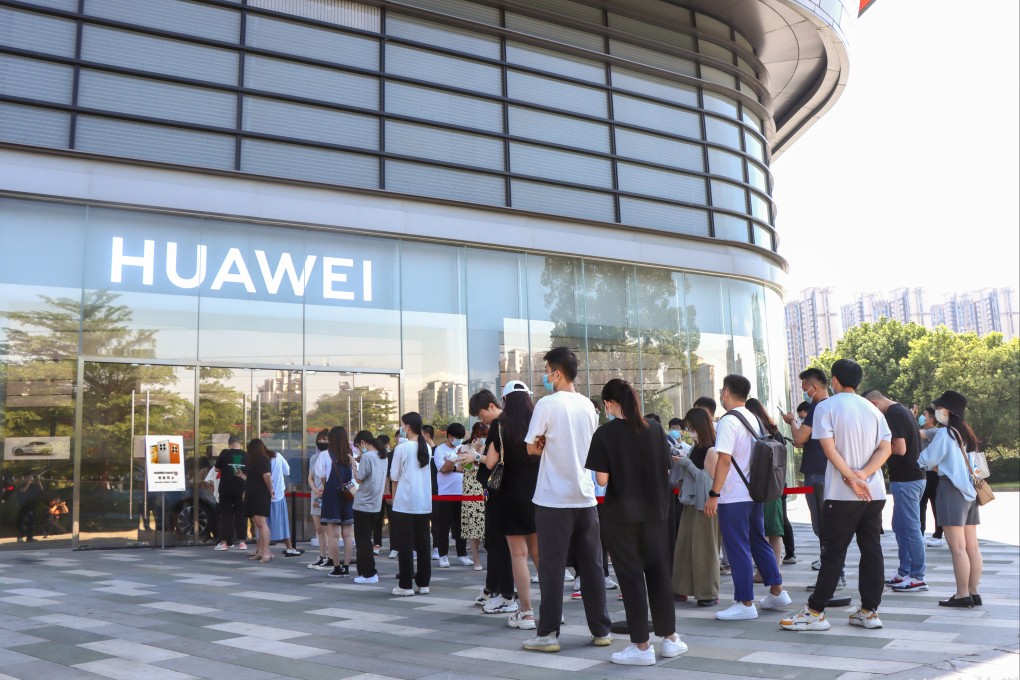Huawei’s flagship store in Shenzhen quickly runs out of new Mate 50 handsets as tech giant continues to battle US sanctions
- The lack of sufficient supply appeared to be more severe for special editions of the phone, such as versions featuring tough Kunlun Glass
- Huawei’s latest efforts come amid stiff competition from major Chinese Android handset makers and Apple, which recently launched the iPhone 14

The latest Mate 50 series by Huawei Technologies Co has been selling out fast after the handsets officially went on sale from September 21, as the sanctions-hit tech giant attempts to stay relevant in the high-end smartphone market.
This Post reporter saw a handful of shoppers checking out the newly-launched handsets at Huawei’s flagship store in downtown Shenzhen around lunchtime on Thursday, a day after they officially went on sale. However, most of the models had already sold out with only the basic and Pro version in black colour still available at the shop.
The lack of sufficient supply appeared to be more severe for special editions of the phone, such as versions featuring Kunlun Glass, which gives superior protection against the screen being smashed, according to one sales person the Post spoke to. “Kunlun Glass is quite a sophisticated material so we have low inventory for the special versions. Our customers can try making a reservation online but we can’t promise they’ll be able to buy one.”
Huawei did not immediately respond to a request for comment on Thursday.
The Mate 50 RS model featuring a Porsche design, the most luxurious model of the series with a price tag starting from 12,999 yuan (US$1,832), drew some admiring looks from shoppers.
“I had the Porsche version of the Mate 40 series, and I’m still mulling whether I should upgrade to the new one,” one shopper said. “Having no 5G connectivity is still a problem for me though.”